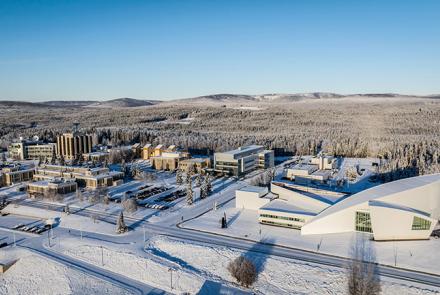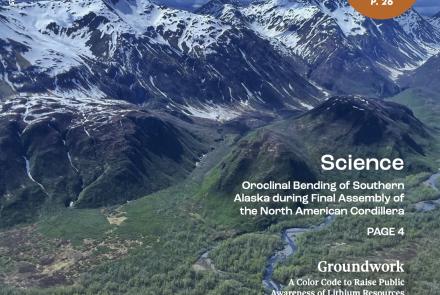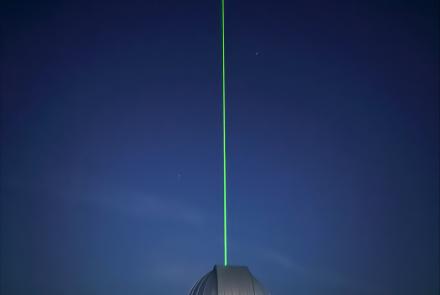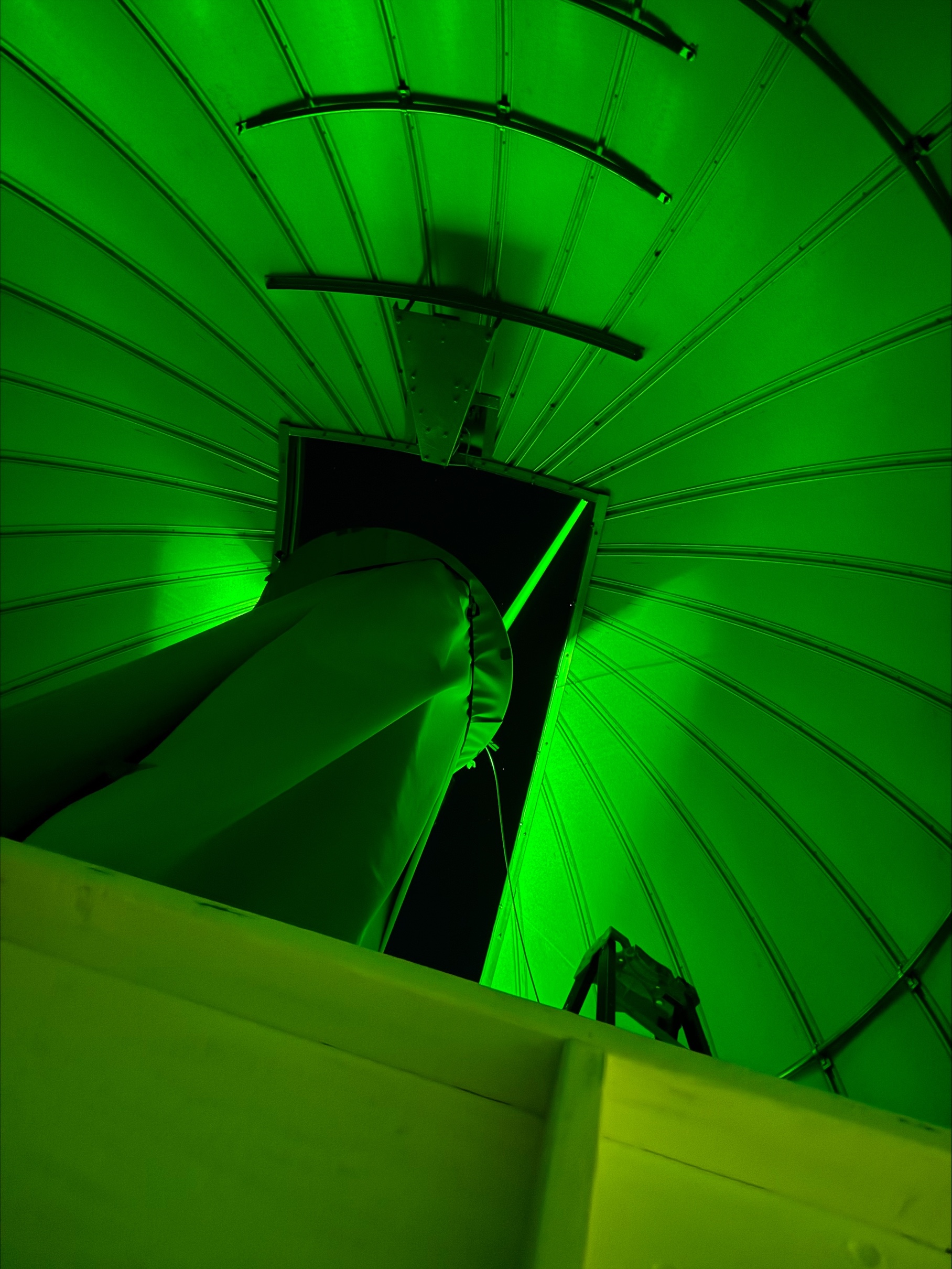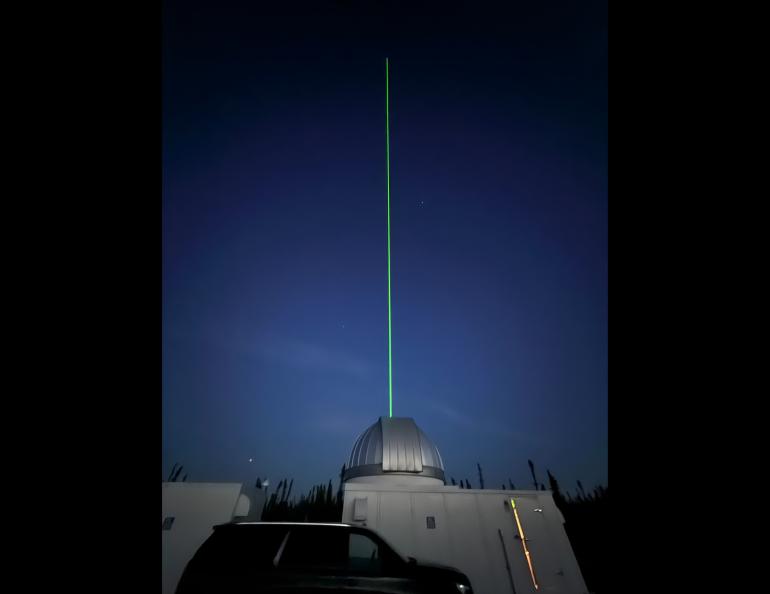
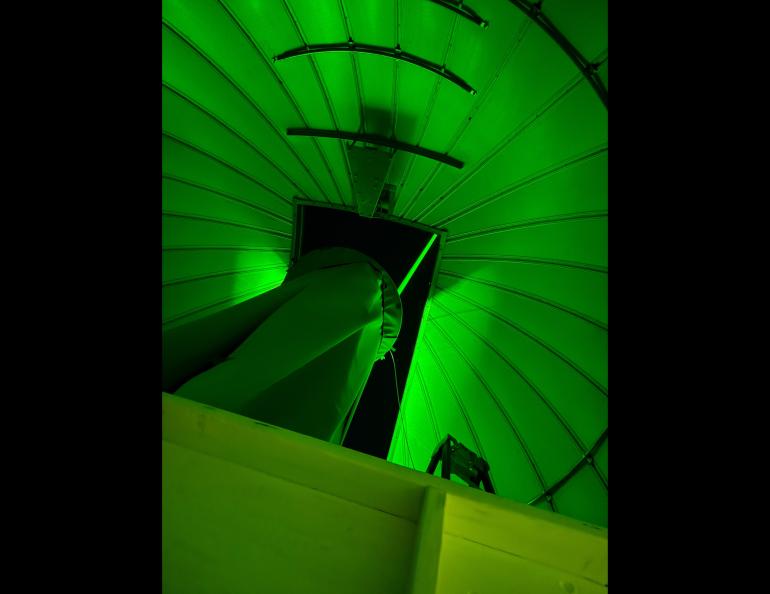
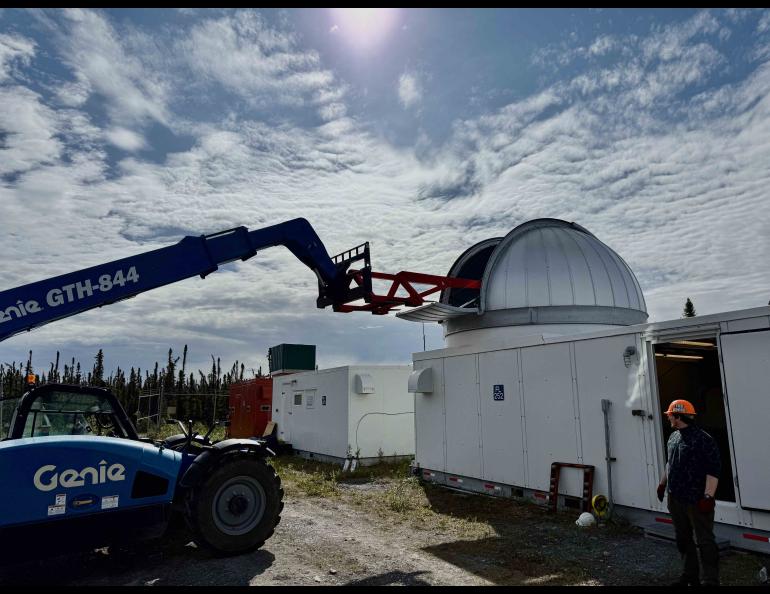
New lidar advances atmospheric science at UAF research site
A new science tool at the University of Alaska Fairbanks research center in Gakona will advance understanding of Earth’s middle and upper atmosphere regions.
The lidar at the Subauroral Geophysical Observatory is one of three operated by the UAF Geophysical Institute’s Lidar Research Laboratory. Others are at the institute’s Poker Flat Research Range and have been in operation for several decades.
The specialized lidar, known as a Rayleigh lidar, will be used for the first time next week and may produce a vertical light beam seen by the local community.
The Geophysical Institute purchased the lidar as part of a $9.3 million National Science Foundation grant it received in 2021 to establish the Subauroral Geophysical Observatory, which includes the institute’s High-frequency Active Auroral Research Program.
“The addition of this lidar will greatly advance the ability of the Subauroral Geophysical Observatory to contribute to our understanding of the upper atmosphere,” said Jessica Matthews, director of HAARP and of the university’s Poker Flat Research Range.
“It is also a great complement to our Poker Flat lidars,” she said. “We’re excited to see what it can reveal.”
The SAGO lidar will enhance experiments that use the HAARP antenna array and may eventually be operated simultaneously with a similar lidar at Poker Flat.
Having two lidars separated by a great distance can allow scientists to study the weather and climate of the upper atmosphere and its variation over regions, said assistant professor Michael Roddewig of the Lidar Research Laboratory.
“We are the only institution in the world that operates two Rayleigh lidar systems separated by several hundred kilometers,” Roddewig said.
What is a lidar?
A lidar sends out extremely short and focused bursts of laser light that may last only a few billionths of a second. The average energy is similar to a light bulb, but the power of the individual concentrated bursts can reach millions of watts.
The Rayleigh lidar provide information about the temperature and density in the stratosphere and lower mesosphere, an area about 7 miles to 53 miles altitude.
The stratosphere contains the ozone layer, which blocks most of the sun’s harmful ultraviolet radiation. It also helps regulate the climate and is a stable region for efficient jet aircraft flight. The mesosphere, above the stratosphere, is where most incoming meteors burn up and links Earth’s weather to the space environment.
The lidar will measure the neutral gas density at different altitudes by counting the number of photons detected in a set period of time after a pulse of light is transmitted. Those measurements will also allow the temperature to be derived using knowledge of how density, temperature and altitude relate to one another.
Rayleigh lidars differ from resonance lidars, which generate colors that specific atoms such as sodium or iron absorb and re-emit. Those excited photons are recorded at ground receivers.
Helping HAARP
Temperature and density data about the neutral atmosphere from the new lidar will benefit study of the ionosphere, the ionized portion of the atmosphere that overlays several regions of the upper atmosphere, including the mesosphere.
“These parameters are keys to interpreting the details of several kinds of HAARP-related measurements of the D-region of the ionosphere,” said Craig Heinselman, SAGO’s principal investigator.
The ionosphere’s D region is the lowest of the ionosphere’s five regions, at about 37 to 56 miles altitude, and is of interest to researchers because it absorbs or weakens radio signals. At lower latitudes it is present mostly in the daytime when ionization from the sun increases. At higher latitudes the D region is present day and night and can be enhanced by auroral particles and other related phenomena.
Heinselman noted the lidar will also be capable of studying other activity in near-Earth space.
“The information is very interesting in its own right, especially in this subauroral region where the aeronomy is dynamic and an exciting area of active study of phenomena such as STEVE,” he said, referring to a distinct aurora-like occurrence called the strong thermal emission velocity enhancement.
• Richard Collins, director, Lidar Research Laboratory, rlcollins@alaska.edu
• Rod Boyce, University of Alaska Fairbanks Geophysical Institute, 907-474-7185, rcboyce@alaska.edu

